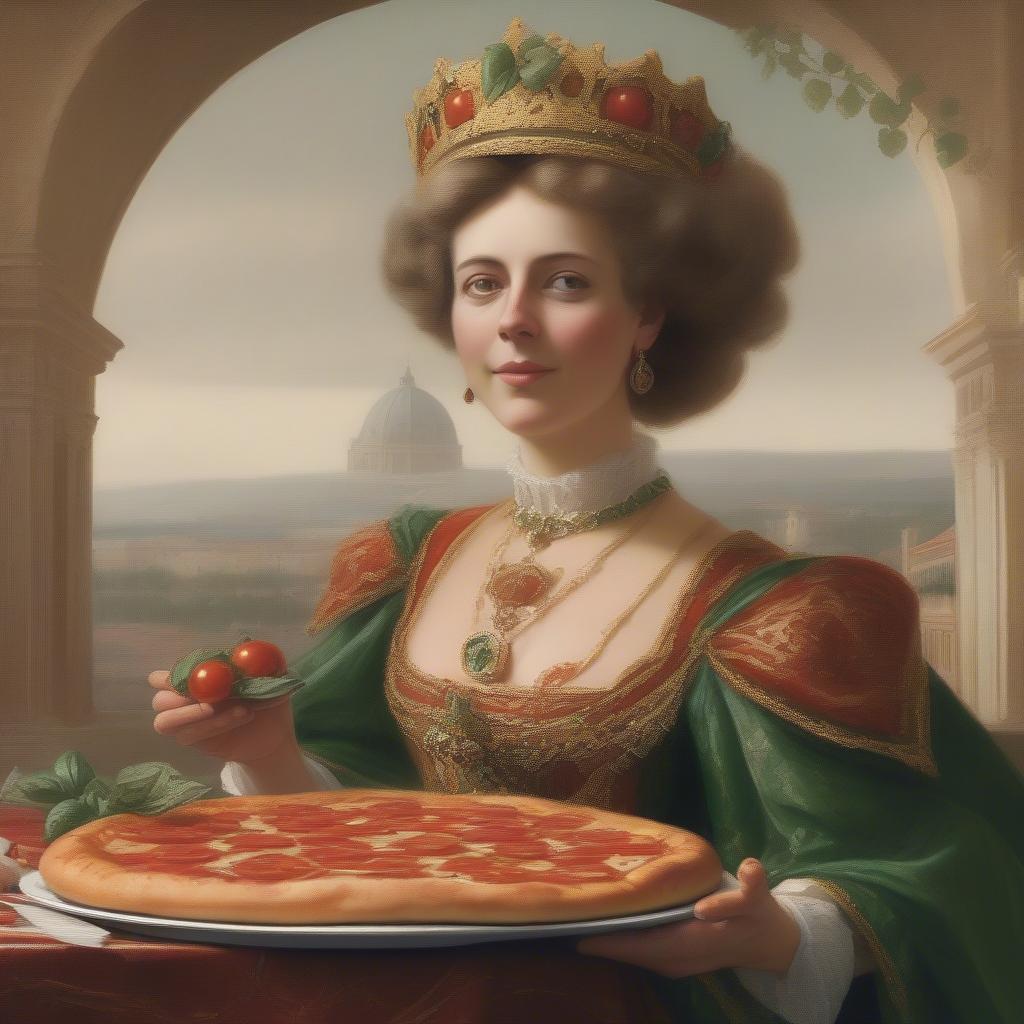
Pizza, a culinary icon enjoyed worldwide, boasts a rich and fascinating history. While the modern pizza we know and love is often associated with Italy, its origins stretch back further and wider than many realize. So, who invented pizza? The answer, like a well-leavened dough, is complex and layered.
Table Content:
Flatbreads topped with various ingredients have existed for centuries in different cultures. Ancient Egyptians, Greeks, and Romans all enjoyed variations of flatbreads seasoned with herbs, oils, and sometimes, cheese and other toppings. These early forms of flatbread served as a convenient and nutritious food source. These culinary ancestors of pizza highlight the universality of the flatbread concept.
However, the story of pizza as we know it begins in 18th-century Naples, Italy. Neapolitan street vendors sold large, flatbreads topped with simple ingredients like tomatoes, cheese, garlic, and anchovies. These affordable and flavorful meals became incredibly popular among the working class. This era marked the genesis of pizza as a distinct dish.
A pivotal moment in pizza history occurred in 1889, when pizzamaker Raffaele Esposito was summoned to create a pizza for Queen Margherita of Savoy. He prepared three pizzas, and the queen favored one topped with tomatoes, mozzarella, and basil, representing the colors of the Italian flag. This pizza was subsequently named the Margherita, further solidifying pizza’s place in Italian culture. This royal endorsement propelled pizza into the national spotlight.
 Queen Margherita enjoying the first Margherita pizza
Queen Margherita enjoying the first Margherita pizza
The emigration of Italians in the late 19th and early 20th centuries played a crucial role in spreading pizza’s popularity across the globe. As Italians settled in new countries, they brought their culinary traditions with them, introducing pizza to a wider audience. The adaptable nature of pizza allowed it to be readily embraced and adapted to local tastes and ingredients.
The Evolution of Pizza: From Naples to New York
Following World War II, pizza experienced a surge in popularity in the United States, particularly with the rise of pizzerias and the development of new styles like the iconic New York-style pizza. Characterized by its thin, crispy crust and generous toppings, New York-style pizza quickly became a beloved American staple. This American interpretation of pizza further diversified the global pizza landscape.
 A classic slice of New York-style pizza.
A classic slice of New York-style pizza.
Pizza Today: A Global Phenomenon
Today, pizza is a truly global food phenomenon, enjoyed in countless variations across the world. From deep-dish Chicago pizza to Brazilian green pea pizza, the versatility of pizza allows for endless culinary creativity. Pizza continues to evolve and adapt to diverse cultural preferences.
“Pizza is more than just food; it’s a canvas for culinary expression,” says renowned food historian, Dr. Elena Rossi. “Its simple yet adaptable nature allows for endless possibilities, reflecting the unique flavors and traditions of different cultures.”
Pizza Who Invented: FAQs
Who is credited with making the first Margherita pizza? Raffaele Esposito is credited with creating the Margherita pizza for Queen Margherita of Savoy in 1889.
Where did pizza originate? While flatbreads with toppings have existed in various cultures for centuries, the modern pizza we know today originated in Naples, Italy.
When did pizza become popular in the United States? Pizza gained significant popularity in the US after World War II.
What are some popular pizza styles around the world? Popular styles include Neapolitan, New York-style, Chicago deep-dish, and Brazilian green pea pizza.
What are the basic ingredients of a traditional Margherita pizza? The basic ingredients are tomatoes, mozzarella cheese, and basil.
Why is pizza so popular? Pizza’s popularity stems from its versatility, affordability, and delicious combination of flavors. It’s a food that can be enjoyed by people of all ages and backgrounds.
What is the significance of pizza in Italian culture? Pizza is deeply ingrained in Italian culture, representing a culinary tradition passed down through generations.
In conclusion, while the precise origins of pizza are complex, its evolution from a simple Neapolitan street food to a global culinary icon is a testament to its enduring appeal. So, the next time you enjoy a slice of pizza, remember the rich history and cultural significance behind this beloved dish.